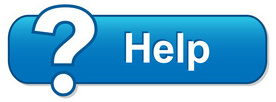MenuClose
Google Search Console Errors
Most Google Search Console errors are nothing to be concerned about and do not require any fixing. Google sends robots out to do it's work, and these robots just report on what they see, without taking on board the intention of the webmaster. This results in errors being reported to you which are most likely not errors at all.
We have made a list of the most common Google Search Console errors and explained what they mean.
- blocked by robots.txt - your website does not need every page to be indexed and found by robots. For instance, your shopping cart and checkout pages should be blocked by the automatically created robots.txt file in your website. This is normal and nothing needs to be done by you.
- not indexed - if a page is marked noindex, this is very similar to the robots.txt file and is usually nothing to worry about because it means pages such as any member only password pages, checkouts and shopping cart pages are not being indexed. Most web masters don't want these pages indexed and block them. The not indexed error message can also show up if it is a duplicate page, so it has the same URL as another page on your site. Also, pages which are not indexed can also be legtimate ones which have been redirected, which is as how it should be if you have made redirections as you don't want the original page to be indexed as it is no longer visited.
When you create a new page, the CMS will give that page a default filename which will have a number in it like www.mysite.co.nz/product/78749823. When you update the filename to a more SEO friendly one like www.mysite.co.nz/product/blue-shoes, the CMS will automatically redirect the default URL to the new URL. If a Googlebot has crawled and indexed the default filename, it will likely now come back and reports that this URL is no longer relevant and has been redirected. This is good because the new URL is good and the old URL is no longer relevant. However sometimes Google shows both URLs in its report which it should not do. But eventually Google will remove the old links from its indexing.
- redirect error - a redirect is meant to tell Google to ignore a URL and instead visit a different URL which is the redirected one. There are a couple of redirect errors that might be happening: redirect loop (where you are redirecting from the original to the original or same URL), too long redirect chain (if there are multiple redirects in a chain sequence, this will throw up an error message as the robots give up), too long URL (the URL that it is being directed to has too many characters in it).
- 404 error - a 404 error means a page has not been found. This mostly occurs because you have deleted or renamed a page URL/filename and not redirected the old URL to another page. A 404 error is essentially a broken link and you should fix these by redirecting the broken link to another live page. You can do this under the SEO tab and then through the URL redirects tab.
- other 4xx errors - a 401 error means the page is not being shown because it is password protected or other restrictions have been set up to stop the Googlebots accessing the page. A 403 forbidden error will happen if you block a page or product, or make it only visible to members. This is the expected outcome.. So it's not really an error if you consider your intention. But from Google's point of view, it is an error, because a page that was visible, is no longer visible.
- nofollow links - a nofollow tag tells Googlebots not to follow one or more links from this page to another page. This means the Googlebot will not crawl the link from your site, which is perfectly fine because this tool is often used when linking to other websites. You don't need to worry about the other website not being crawled.
